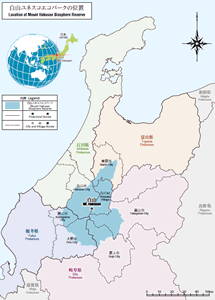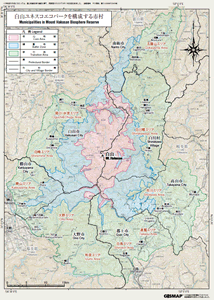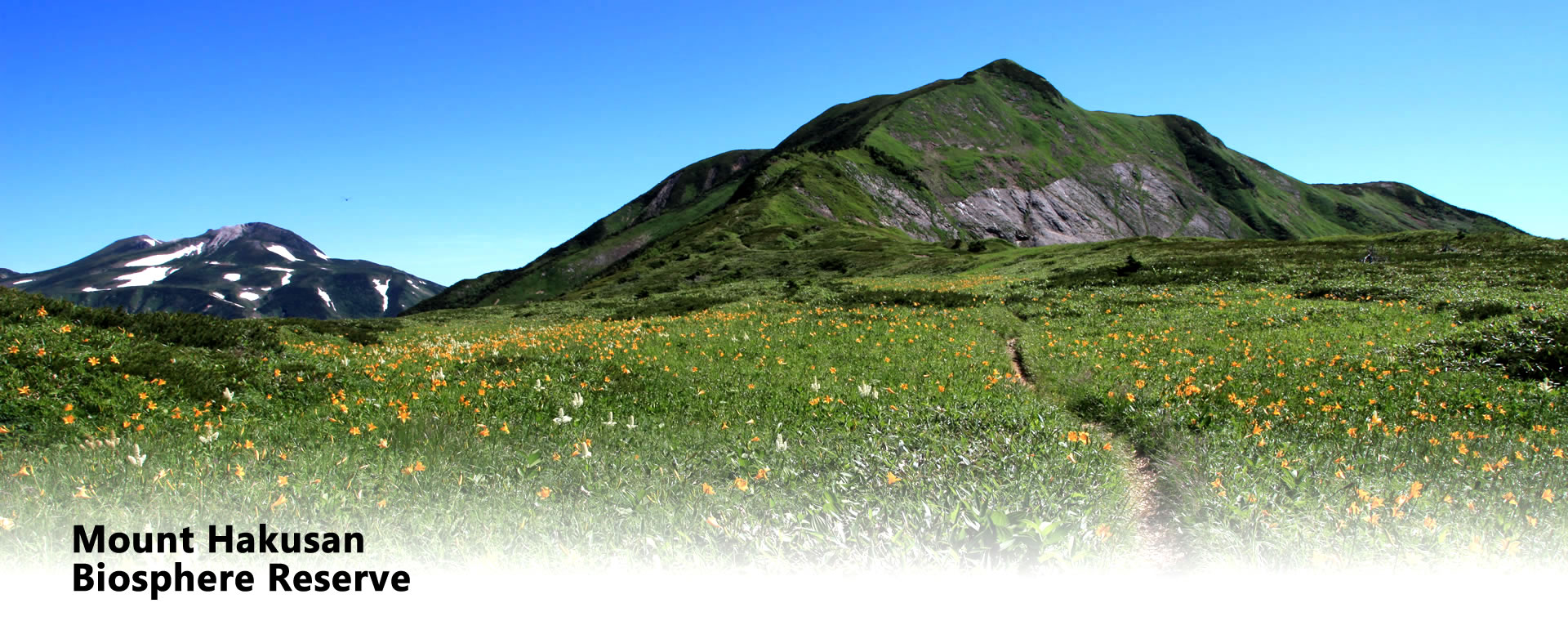
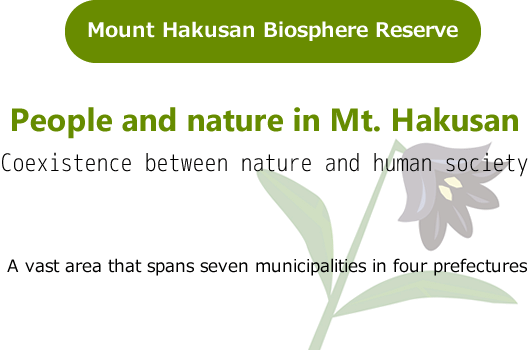
The Mount Hakusan Biosphere Reserve is roughly located at the center of the Japanese archipelago at approximately 36°north latitude and 137°east longitude.
At the heart of the Biosphere Reserve is the 2,702–meter-high Mt. Hakusan, one of Japan’s famous mountains, with the mountain’s alpine and subalpine zones in the core area, the vast Japanese beech forests surrounding the core area in the buffer zone, and the mountain villages spreading out around these set as the transition areas.
The whole area extends across seven municipalities in four prefectures.
• Nanto City in Toyama Prefecture
• Hakusan City in Ishikawa Prefecture
• Ono City and Katsuyama City in Fukui Prefecture
• Takayama City, Gujo City, and Shirakawa Village in Gifu Prefecture

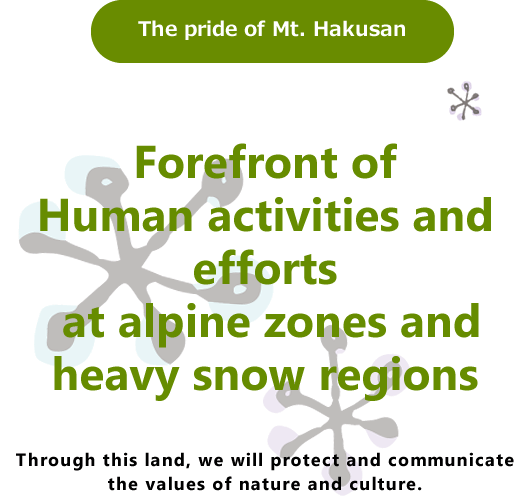
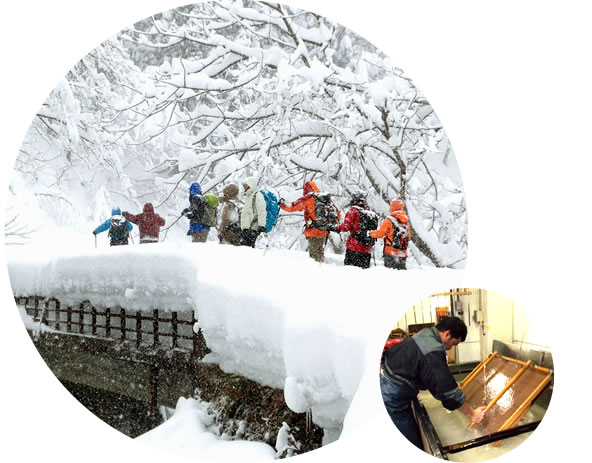
Mt. Hakusan is characterized by alpine vegetation, heavy snows, Japanese beech forests, mountain villages and the worship of Mt. Hakusan, among others. It is located at the westernmost end of the Japanese alpine belt distribution and is one of the world’s heavy snow regions closest to the equator.
At the Mount Hakusan Biosphere Reserve enveloping Mt. Hakusan, the people who conserve and communicate the values of nature and culture in Mt. Hakusan conduct many programs and activities.
The pride of Mt. Hakusan
● At the forefront of alpine zones and heavy snow areas
● Programs and activities by people who protect and communicate the values of nature and culture in Mt. Hakusan

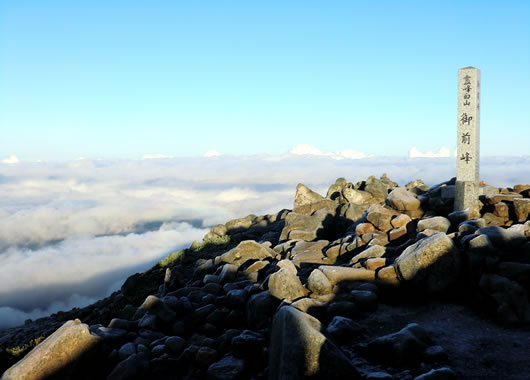
1. Alpine region
At 2,702 meters high, Mt. Hakusan is at the westernmost point among Japanese alpine mountains. This isolated peak is part of the mountain range separating the Sea of Japan and Pacific Ocean sides of the Japanese archipelago.
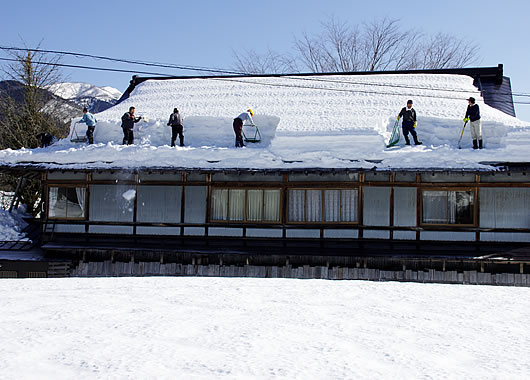
2. Unique heavy snow region in the world
In winter, Mt. Hakusan receives the northwest monsoon containing huge volumes of moisture from the Sea of Japan, causing copious amounts of snow to fall from summit to foothills. It is the lowest latitude heavy snow region in Japan and the world. Most of the snow melts from spring to summer.
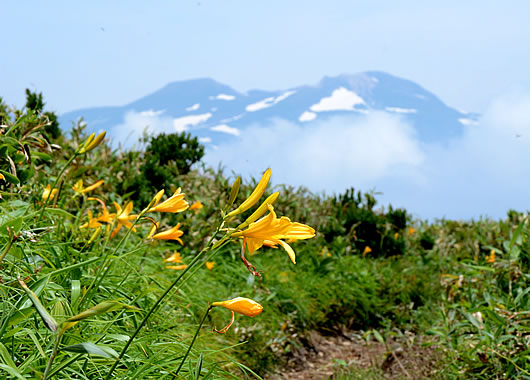
3. Profusion of alpine plants
Because Mt. Hakusan is at the western end of the Japanese alpine zone, many alpine plant species have their western or southern limit of distribution here. At the summit, diverse alpine plant communities can be seen depending on the snow cover and landform; many alpine plants have "Hakusan" in their standard Japanese names.
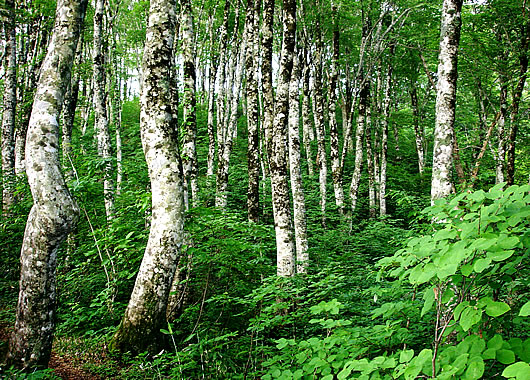
4. Vast Japanese beech forests nurturing diverse flora and fauna
The foothills of Mt. Hakusan are covered by vast Japanese beech forests and is home to a high density of large mammals, such as the Asiatic black bear and Japanese serow, and large birds of prey, such as the Golden eagle.
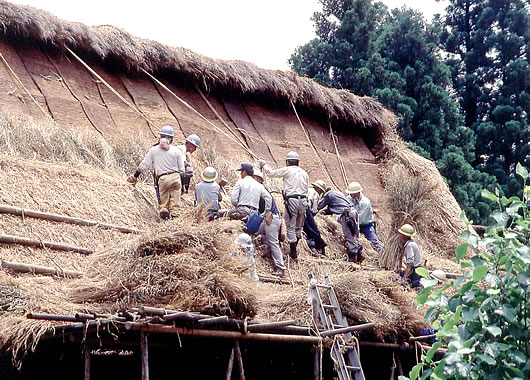
5. A mountain village lifestyle and culture
Heavy snow severely restricts daily living and transportation at the foot of Mt. Hakusan, but a sustainable lifestyle adapted to the snow had been practiced here, with former livelihoods (economic activities) in coal, hunting, agriculture and sericulture. This can be seen in the Historic Villages of Shirakawa-go and Gokayama, a World Cultural Heritage Site, and the Important Preservation District for Groups of Traditional Buildings in Shiramine, Hakusan City.
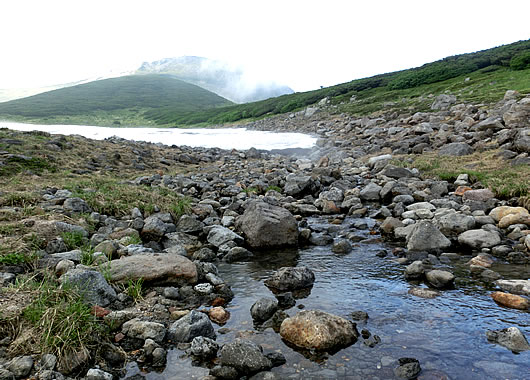
6. Source of four river systems
Snow cover in Mt. Hakusan melts from spring to summer, supplying the four river systems of Sho, Tedori, Kuzuryu and Nagara with abundant water. Mt. Hakusan is the water source that supports the lives of many watershed residents through water for agriculture, power generation and drinking.
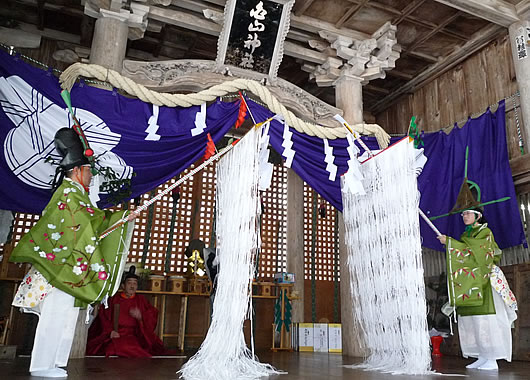
7. Sacred mountain
Mt. Hakusan has been the object of worship by countless people through the ages. The mountain ascetic route (Zenjodo) opened from Kaga, Mino and Echizen has welcomed numerous worshippers. There are said to be more than 2,700 Hakusan Shrines built all over Japan.
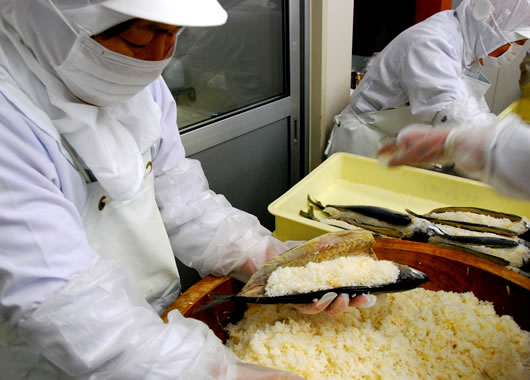
8. People who protect and partake of Mt. Hakusan's bounties
Local residents have made their living by partaking of Mt. Hakusan's bounties, and have lived their lives being thankful for these blessings. This gratitude and reverence have led to the protection of Mt. Hakusan’s natural environment.

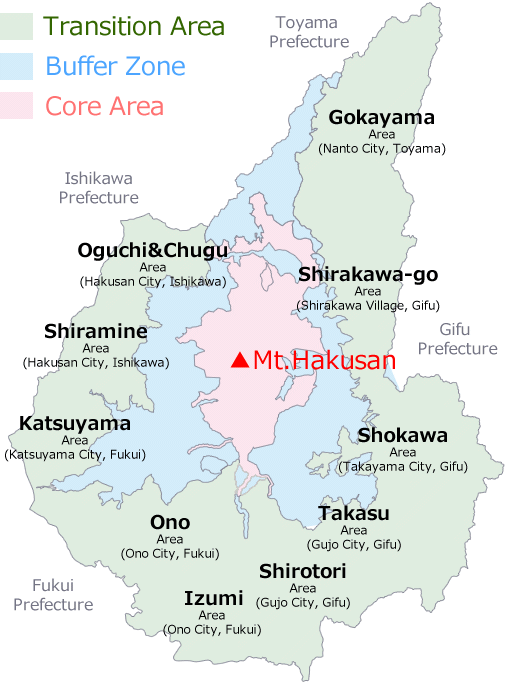
Core Area
Area strictly protected and preserved over the long term
Buffer Zone
Area where education, training and ecotourism are held for the protection of the core area
Transition Area
Area where people live and carry out sustainable development in harmony with nature

At the Mount Hakusan Biosphere Reserve, environmental education and cultural heritage activities contributing to ESD are held at each area.
There are a wide range of activities: experiential learning to commune with nature in Mt. Hakusan, biological surveys and conservation efforts that are mainly conducted by elementary school and junior high school children and local residents, and activities to experience and pass on tradition and culture. Each activity has varying target groups and number of people, although many are for 10 to 30 students. Over 50 activities are held at the various areas of the reserve.
For example, at the conservation efforts for Asian skunk cabbage communities in Yamanaka Pass targeting elementary school students, we were able to encourage the children to be aware of the current situation and problems of Asian skunk cabbage communities, and make them interested in the conservation efforts.
In Katsuyama City, red dragonfly monitoring conducted by elementary school students and rare plant conservation efforts were given recognition. In 2014, all of Katsuyama City’s municipal elementary and junior high schools became a member of UNESCO Associated Schools.
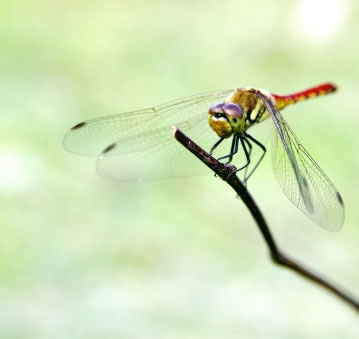

Harmony and balance between people and nature
UNESCO began the designation of biosphere reserves in 1976. It is operated as a project of the UNESCO’s Man and the Biosphere Programme (MAB) under UNESCO’s Natural Sciences Sector.While World Heritage sites strive for unspoiled nature, biosphere reserves aim for harmony between conserving the ecosystems and sustainable use by humans — human society coexisting with nature.There are 686 biosphere reserves (9 in Japan) in 122 countries (as of July, 2018).

Three Functions
1. Conservation (Biodiversity conservation)
Play an important role in conservation of biodiversity that includes ecosystems representing the biogeographical region, along with human intervention
2. Support for scientific research
Provide monitoring and research, education and training for sustainable development
3. Economic and social development
Conduct activities to serve as a global model of sustainable development in harmony with environmental conservation
These functions of the Biosphere Reserve are not independent and mutually reinforce each other.
Three interdependent zones are set in order to achieve the three functions.
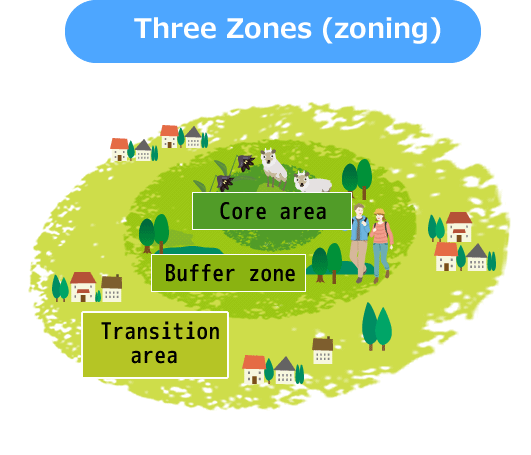
Three Zones (zoning)
● Core area
Strictly protected. Long-term conservation
●Buffer zone
Zone acting as buffer to protect the core area. Education, training and ecotourism
● Transition area
Area where people live and carry out sustainable development in harmony with nature



